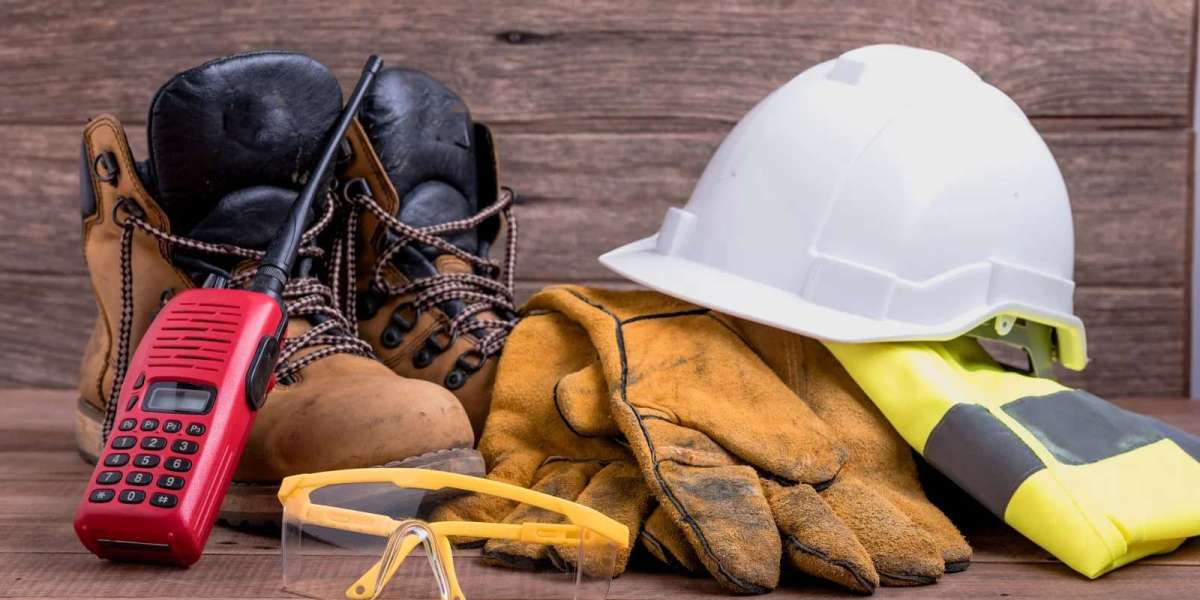Construction site safety is more than just wearing a helmet—it's about creating a safe, hazard-free space where workers can perform their jobs without fear of injury. With powerful machines, high places, and heavy materials, job site hazards are everywhere. That’s why using the right construction safety gear is essential for preventing accidents and saving lives.
From personal protective equipment (PPE) like hard hats and gloves to reflective clothing and hearing protection, each item plays a vital role in keeping workers safe. Following safety standards in construction, especially those set by OSHA, is key to protecting employees and staying compliant. A well-equipped site leads to fewer injuries and more efficient work.
Why Safety Gear Is Non-Negotiable on Construction Sites
Construction jobs come with many dangers. Workers deal with high places, sharp tools, and loud machines. Without the right gear, serious injuries or even death can happen. That’s why having proper worker safety equipment is not a choice—it’s a must. Safety gear prevents accidents and protects workers from job site hazards like falling debris, fire, electric shocks, and toxic fumes.
The United States follows safety laws set by OSHA. These rules say what gear workers must wear. Following OSHA construction safety rules not only keeps people safe but also avoids big fines for companies. Good construction safety protocols, along with regular training and checks, reduce common accidents on construction sites and help teams work with confidence.
Understanding Personal Protective Equipment (PPE)
PPE means any gear that protects a worker from getting hurt. It includes items worn on the head, hands, feet, eyes, and body. PPE can also include hearing protection and high-visibility clothing. Using personal protective equipment (PPE) is one of the first steps in construction site risk management.
Each job needs different gear. For example, a worker cutting wood needs eye and hand protection, while someone working near traffic needs reflective gear. To follow safety standards in construction, companies should use a site safety checklist to choose the right PPE for each job task.
Hard Hats: The First Line of Defense
Hard hats are the most important part of head and eye protection. They protect from falling tools, sharp materials, and even electric wires. In the USA, all workers on active sites must wear hard hats, especially where falling objects are a risk.
There are three main types of hard hats: Class G, E, and C. Class G is general use, Class E protects against electric shocks, and Class C gives better airflow but less hazard protection. To stay safe, workers must inspect their hard hats often and replace them if damaged or old. A cracked or sun-faded helmet won’t offer real protection.
Keeping Eyes Safe: Protective Glasses and Goggles
Your eyes are at risk on almost every construction site. Dust, sparks, flying nails, and chemicals can cause blindness or serious damage. That’s why using the right safety glasses or goggles is a must. This gear should be impact-resistant and fit tightly to keep out harmful materials.
Anti-fog coatings and UV protection are extra features that help when working in hot or bright conditions. Choosing the right type of gear depends on the task. Goggles are better when full coverage is needed, while glasses are good for light work. In any case, using the correct construction worker protective gear list will guide you in making the best choice.
Ear Protection: Preventing Long-Term Hearing Damage
Construction sites are noisy. Drills, hammers, and engines often make sounds above 85 decibels. Over time, this can lead to hearing loss. Workers need noise reduction equipment like earmuffs or earplugs to protect their ears.
Earmuffs go over the ears and work well for loud, short bursts of noise. Earplugs go inside the ears and are better for long hours of exposure. For the best protection, custom-fitted plugs are ideal. Knowing what safety equipment do construction workers need also includes understanding how and when to wear hearing gear.
Gloves That Guard Against More Than Just Dirt
Hands do most of the work on site, and they face real danger. Cuts, burns, and chemical exposure can all happen without warning. That’s why gloves are a key part of any construction safety gear kit. The best gloves for construction work depend on the job being done.
Kevlar gloves protect from cuts. Nitrile gloves resist chemicals. Leather gloves offer heat resistance. Each glove type offers its own form of hazard protection. Always match the glove to the job. Wearing the wrong glove can do more harm than good.
Glove Type | Protection Offered | Use Case |
Kevlar | Cut resistance | Handling metal or glass |
Nitrile | Chemical resistance | Mixing or spraying chemicals |
Leather | Heat protection | Welding or hot machinery work |
Boots Built for Battle: Safety Footwear Essentials
Feet take a beating on any job site. From stepping on nails to dropping heavy tools, the risks are real. That’s why construction workers need strong, slip-resistant boots. These boots should have steel or composite toes and soles that protect from punctures.
When choosing construction safety boots, think about your environment. Cold areas need insulation. Wet zones need waterproofing. Electric areas require boots rated for shock resistance. To meet safety standards, footwear must fit well and offer support for long shifts.
High-Visibility Clothing for Maximum Awareness
Construction workers are often near trucks, forklifts, or other moving machines. To avoid accidents, they need to be seen. High-visibility gear, or hi-vis clothing, helps prevent these issues. This type of protective clothing includes vests, jackets, pants, and hard hats with bright colors and reflective strips.
The brighter the clothing, the better. But not all reflective clothing is equal. ANSI makes rules on what reflective wear is safe. If you’re near fast-moving traffic, you need gear with full-body reflection. Knowing why reflective clothing is important in construction is part of any safety program.
Specialty Safety Gear for Unique Construction Tasks
Some tasks need more than the basics. For high work, harnesses and lanyards protect from falls. For dusty jobs like sanding drywall or concrete cutting, workers need respirators. Painters may also use masks to avoid breathing harmful fumes.
Fire and heat tasks require flame-resistant clothing. Welders wear gear made from heavy materials that resist sparks. This industrial safety gear must meet strict standards to keep workers safe. Many injuries happen when workers forget or skip this specialized equipment.
Maintaining and Inspecting Your Safety Equipment
Using safety gear is only part of the job. It must be checked, cleaned, and replaced often. If you’re wondering how often should PPE be replaced, it depends on the item. Gloves may last days or weeks, while hard hats can last years. But the key is frequent inspection.
A site safety checklist helps teams stay on track. If gear is cracked, frayed, or no longer fits, it must be thrown away. Training workers to inspect their own equipment is essential. Even the most thorough construction site safety protocols can fall short without this step. For comprehensive safety training, consider enrolling in an OSHA Training online course.
Final Thoughts: Prioritizing Safety Builds a Stronger Workforce
A safe team is a strong team. When workers feel safe, they work better. They make fewer mistakes and are more confident. Construction site safety isn’t just about rules—it’s about creating a culture where people look out for each other.
Preventing injuries in the construction industry means using the right tools, following smart routines, and caring about your crew. When safety becomes a habit, your job site becomes more productive, your company gets a better name, and workers go home safe every day.
FAQ
What safety equipment is needed for construction?
Construction workers need PPE like hard hats, safety glasses, gloves, boots, ear protection, and high-visibility clothing.
What equipment does a construction worker use?
Workers use safety helmets, goggles, gloves, earplugs, steel-toe boots, and reflective vests to protect against common job site hazards.
What are the 10 PPE used in construction?
Common PPE includes hard hats, safety glasses, gloves, safety boots, ear protection, respirators, face shields, hi-vis clothing, harnesses, and knee pads.
What are five safety equipment?
Hard hats, goggles, gloves, safety boots, and reflective vests are five essential safety equipment items for construction.
What safety equipment is required by OSHA?
OSHA requires PPE such as head protection, eye and face protection, respiratory devices, hand protection, and fall protection where needed.
What is PPE in construction?
PPE in construction stands for personal protective equipment, which includes any gear worn to reduce exposure to hazards on a job site.



